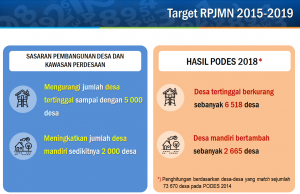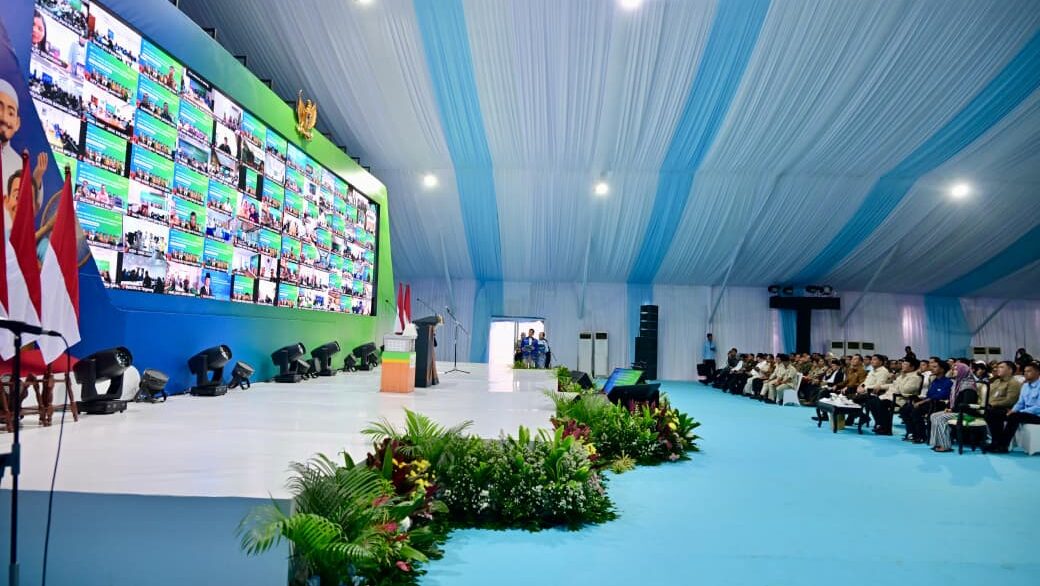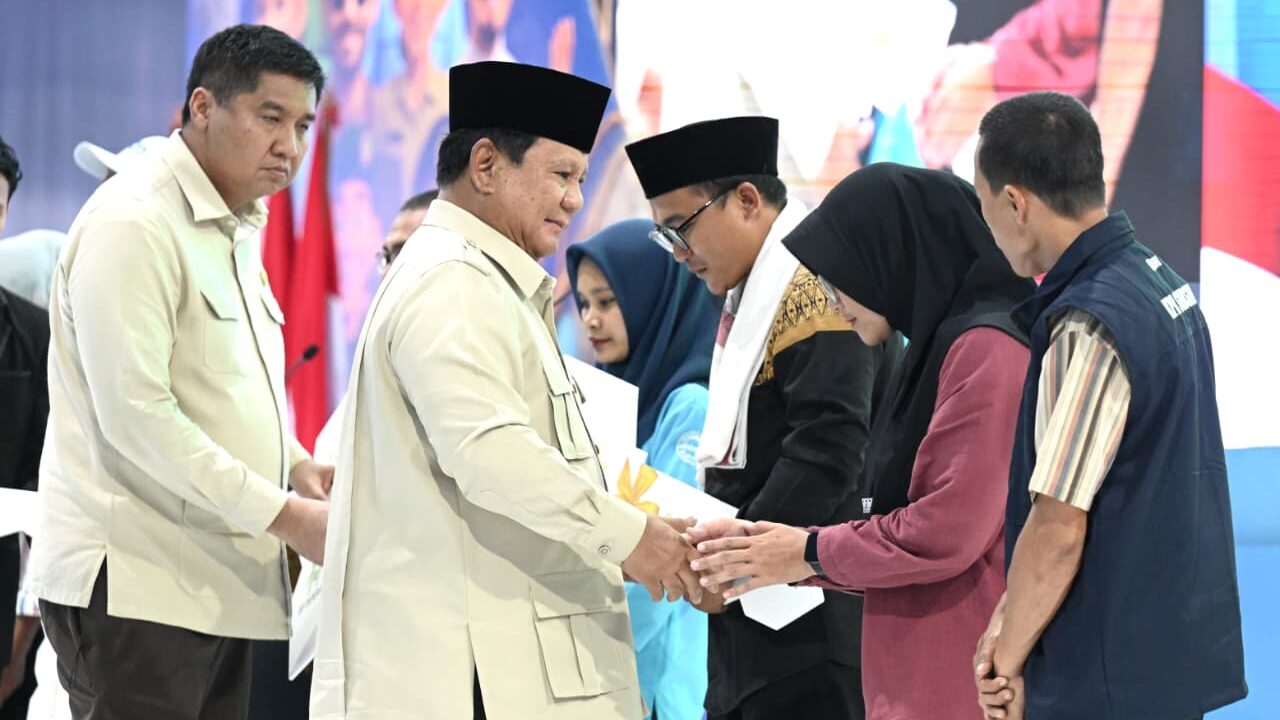BPS : Underdeveloped Villages Drops by 6,518, Independent Villages Rises by 2,665 Villages
 The number of Underdeveloped Villages, Independent Villages, and Developing Villages in 2018 shows various trends, based on Village Potential Statistics (Podes) collected by the Central Statistics Agency (BPS) in May 2018.
The number of Underdeveloped Villages, Independent Villages, and Developing Villages in 2018 shows various trends, based on Village Potential Statistics (Podes) collected by the Central Statistics Agency (BPS) in May 2018.
Head of BPS Suhariyanto said that the number of Underdeveloped Villages has reduced from the previous 19,750 villages (26.81 percent of total villages in Indonesia) in 2014 to 13,232 villages (17.96 percent) in 2018. On the other hand, the number of Independent Villages has increased from 2,894 (3.93 percent) in 2014 to 5,559 villages (7.55 percent), he said.
Suhariyanto added that Developing Villages also increased from 51,026 villages (69.26 percent) to 54,879 villages (74.49 percent).
The statistics show that Indonesias development has exceeded targets set in the 2015-2019 National Medium-Term Development Plan (RPJMN), particularly in developing villages and rural areas, Suhariyanto said in his statement at the BPS Headquarter, Jakarta, on Friday (14/12).
Suhariyanto added that the Governments target is to increase the number of Independent Villages by 2,000 and reduce the number of Underdeveloped Villages by 5,000 villages. In fact, the number of Independent Villages increased by 2,665, and Underdeveloped Villages reduced by 6,518 villages, based on the 2018 Podes.
According to Suhariyanto, Papua Province has the biggest number of Underdeveloped Villages (87.12 percent), followed by West Papua (83.03 percent), North Kalimantan (61.07 percent), and Maluku (46.42 percent), while Independent Villages are mostly spread in the Special Region of Yogyakarta (40.31 percent), Bali (27.67 percent), West Java (22.48 percent), and West Sumatra (20.10 percent).
Head of BPS explained that there are several indicators to classify Independent Villages, Underdeveloped Villages, and Developing Villages, one of which based on basic services, including: 1. Access to High School and equivalent level schools, in which the number of villages that have access to high school increased by 19 percent from the number in 2014; 2. Access to pharmacy, in which the number of villages that have pharmacy increased by 54 percent; 3. Availability and access to hospitals (villages with hospitals increased by 20 percent); 4. Ease access to fuel (villages with LPG agents increased by 14 percent); 5. Most of the households own toilets (villages where almost each households use their own toilets increased by 26 percent); 6. Access to postal or courier services (villages with postal services increased by 59 percent); and 7. Travel time to sub-district office (from the previous average of 1 hour 32 minutes in 2014 to an average of 34 minutes).
The other indicator is based on village governance, which include: 1. Having village autonomy (village revenue increased by more than 54 percent); 2. Having a complete set of village apparatus (villages with village secretary increased by 13 percent); and 3. Human resource quality of village head (village heads who are at least high school graduates increased by 10 percent). The number of village/district has also increased by 1,741 compared to that in 2014, the Head of BPS Suhariyanto added. (Humas BPS/ES)
Translated by : Rany Anjany Subachrum
Edited by : M. Ersan Pamungkas








